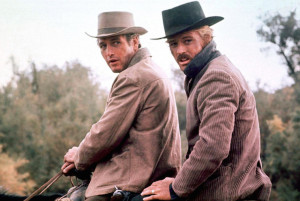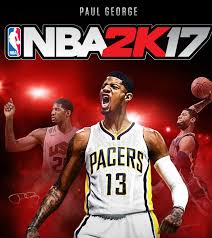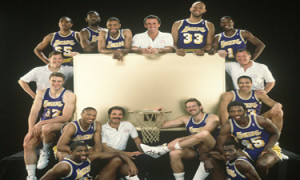Waiting for the Weekend: Is the NBA Using Monopoly Money?

Some of the NBA free agent signings makes me think of the guys chasing Butch and Sundance. “Who are those guys?”
As I have read over the last few days about all the NBA players receiving huge guaranteed, long-term contracts, I can’t help thinking about the classic movie Butch Cassidy and the Sundance Kid.
Early in the movie when Butch and Sundance are being followed by a group of horsemen, they keep asking themselves “who are those guys?” as they are unable to shake them despite making many maneuvers that typically would have knocked trackers off their trail.
With several of the players who have signed mammoth contracts this week, I have that same question “who are those guys?”
Obviously, a few of the players receiving eye-popping contracts are household names, like Steph Curry, Kevin Durant and Kyle Lowry, but it seems that many of the large contracts have gone to players who even regular NBA fans barely know.
Tell me the truth, could you really pick Otto Porter Jr. (4 years, $106.5 million offer sheet by the Nets), Danilo Gallinari (3 years, $65 million by the Clippers) or Langston Galloway (3 years, $21 million by the Pistons) out of a lineup? Not to mention, Tim Hardaway Jr. signed a four year, $71.5 million offer sheet with the Knicks. Now, in his day I could see Tim Hardaway Sr. being worth that type of money, but the young Hardaway has a career scoring average of 11 points per game, including a career-high 14.5 ppg this past season. I barely even knew he was still in the NBA.
I remember in the early 1980s when new NBA Commissioner David Stern pledged that the NBA was on their way to an average salary of a million dollars (at a time when a million dollars was a lot of money). Granted that he made that claim early in the era of Bird and Magic, but still, it seemed a bit far-fetched given that the NBA was clearly number three in terms of the professional sports pecking order in the United States.
Now 35 years later, you can argue that in some ways the NBA is still third among a broad group of sports fans in the U.S., but it probably has the most loyal core of young fans (age 10-30) of any of the three professional major sports leagues and is definitely giving its rank-and-file players larger contracts than that level of player can find in the NFL or MLB.

To young fans who watch the NBA through an NBA2K17 world, the player movement is exciting and interesting.
One of those loyal fans is my 11-year-old son, Nate. Now Nate rarely actually watches a live NBA game on television, but between YouTube Videos, NBA 2K video games and other similar platforms, he knows all the players and is loving tracking the free agent signings.
From what I can tell, Nate is probably very typical of the young fan base of the NBA. They follow players as much as they do teams, so players switching uniforms and creating new team dynamics is actually very interesting to them.
In fact, the NBA2K17 game has an entire program that allows you to basically reset the league and create your own super team. It fits perfectly with what is happening in the real NBA.
It was interesting recently that LeBron James and others have been debating the idea of a “super team” and when it actually started. While most point to either the Boston Celtics with Kevin Garnett, Ray Allen and Paul Pierce or the Miami Heat with LeBron, Dwyane Wade and Chris Bosh, LeBron tried to suggest that the Lakers and Celtics of the 1980s were the first “super teams”.
I would argue that most of the championship teams of the pre-2000s were not really “super teams”, they were “super franchises”.
Unlike the current era when these teams try to lock-in two or three great stars and build around them with middle-level role players, many teams from the past included All-Star or Hall of Fame caliber players at every position and even among their reserves.
The Boston Celtics of the 1960s regularly started five Hall of Famers and had All-Star caliber players fighting for playing time. The New York Knicks actually had six Hall of Famers on their 1973 Championship team, plus a pretty strong set of reserves including Henry Bibby, Dean Meminger, Dick Barnett and a future NBA coaching legend in Phil Jackson.
In 1980s, the Celtics, 76ers, Lakers and Pistons all trotted All-Stars and future Hall of Famers off the bench to complement their core of superstar players. The Bulls of the Michael Jordan era seemed to be built around a specific group of players more than some of the previous great teams, but even they included a number of former All-Stars as their supporting players to compliment Jordan and Scottie Pippen.
There are a couple things about the current NBA framework that seems especially different than from past eras.
First, the amount of money is so ridiculous that it seems almost like Monopoly money.
While many of the contracts seem crazy, to me the Otto Porter Jr. contract seems to be the most mind-blowing. This four-year veteran has a career averages of 9.3 points and 4.4 rebounds per game. Granted he had career-highs of 13.4 points and 6.4 rebounds per game in 2016-2017, but is that enough to warrant a contract of more than $25 million per year?
Then there is Kelly Olynyk, who the Boston Celtics decided they no longer wanted because of their signing of Gordon Hayward, but still managed to get a four-year contract worth $50 million from the Mimi Heat. This after averaging 9 points and 4.8 rebounds last season.
Secondly, the number of All-Star caliber players who change teams seems especially high.
There have always been All-Stars who switch teams during the middle of their careers. However, the flow of players being moved from teams either as free agents or as part of trades seems to have accelerated, even during a time when the NBA owners have tried to incentivize players staying with their original teams.
It seems to be a potential problem that 12 of the top 15 players in the NBA are all now playing in the Western Conference (with the possibility of LeBron James joining that group next season).
As long as both conferences have at least one “great” team, the lack of balance between the conferences isn’t really critical. In fact, in theory it should make the competition within the strong conference much tougher.

Nobody really cared that the Los Angeles Lakers won the Western Conference eight times in a 10 year period in the 1980s.
It is easy now to forget that the Los Angeles Lakers won the Western Conference eight times during the 10 years of the 1980s. The only other team to represent the conference in the finals was the Houston Rockets in 1981 and 1986. In fact, during their eight runs to the NBA Finals, the Lakers played a game seven in a Western Conference series only twice, winning against both the Utah Jazz and Dallas Mavericks in game sevens during the 1988 season. In none of their other seven conference championship seasons during the decade did they play a deciding game in the western conference.
Yet, because there were great teams for them to play in the NBA Finals from the East, no one really cared that the Western Conference wasn’t very competitive. In fact, because most people wanted the Showtime Lakers in the Finals, it probably was preferable to many.
The key to the current NBA keeping some semblance of interest will be for at least one Eastern Conference team to be a viable foil for the team that comes out of the West. Ideally, there would be two teams (like the Celtics and 76ers in the early 1980s) annually fighting for a spot in the finals.
If the Golden State Warriors, or one of the other teams from the West, waltzes through the finals in four or five games for each of the next couple seasons, then the NBA will have a competitive balance issue. However, if the Cavaliers, Celtics or Wizards (the three teams from the East that seem to have the best chance of creating a “great” team) can make the finals close and even win a couple of crowns, then all will be good.
As an “old school” sports fan, I continue to struggle with some of the “new norms” in the sports world. However, as long as in the long run the NBA remains competitive and fun to watch (which it isn’t always), then old time fans like me will keep watching. In reality, the current monopoly money world of the NBA may be one of the keys to it staying relevant with the next generation of fans, which is crucial to their long-term success.









